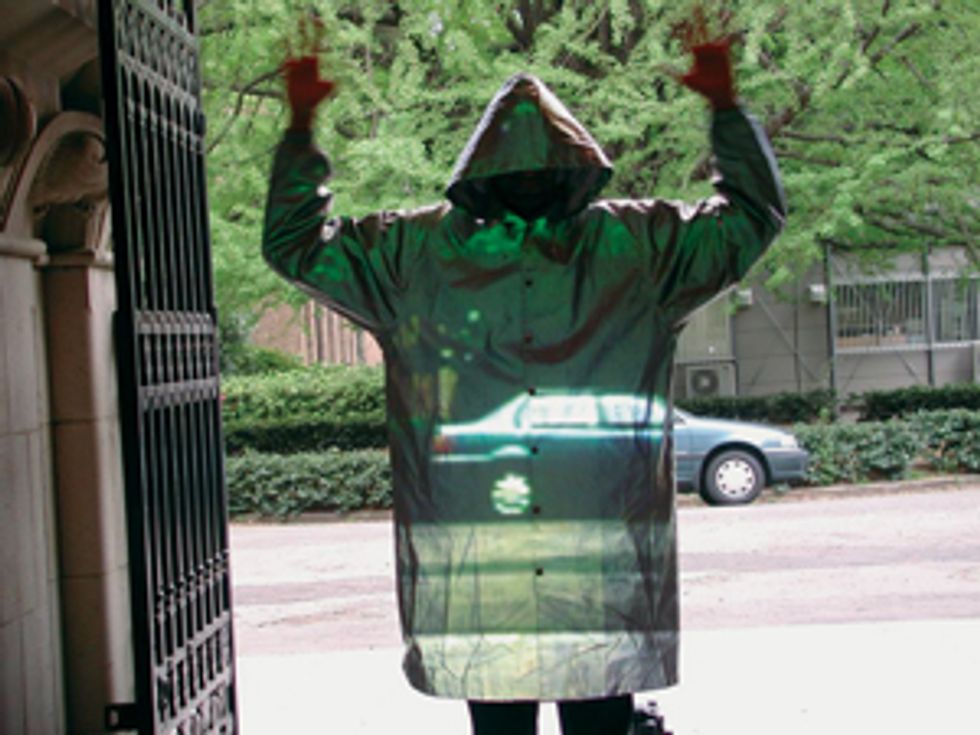Augmented Reality Helps Drivers See Around Blind Spots
The inner surfaces of a car become windows on the world, giving the driver a bird's-eye view
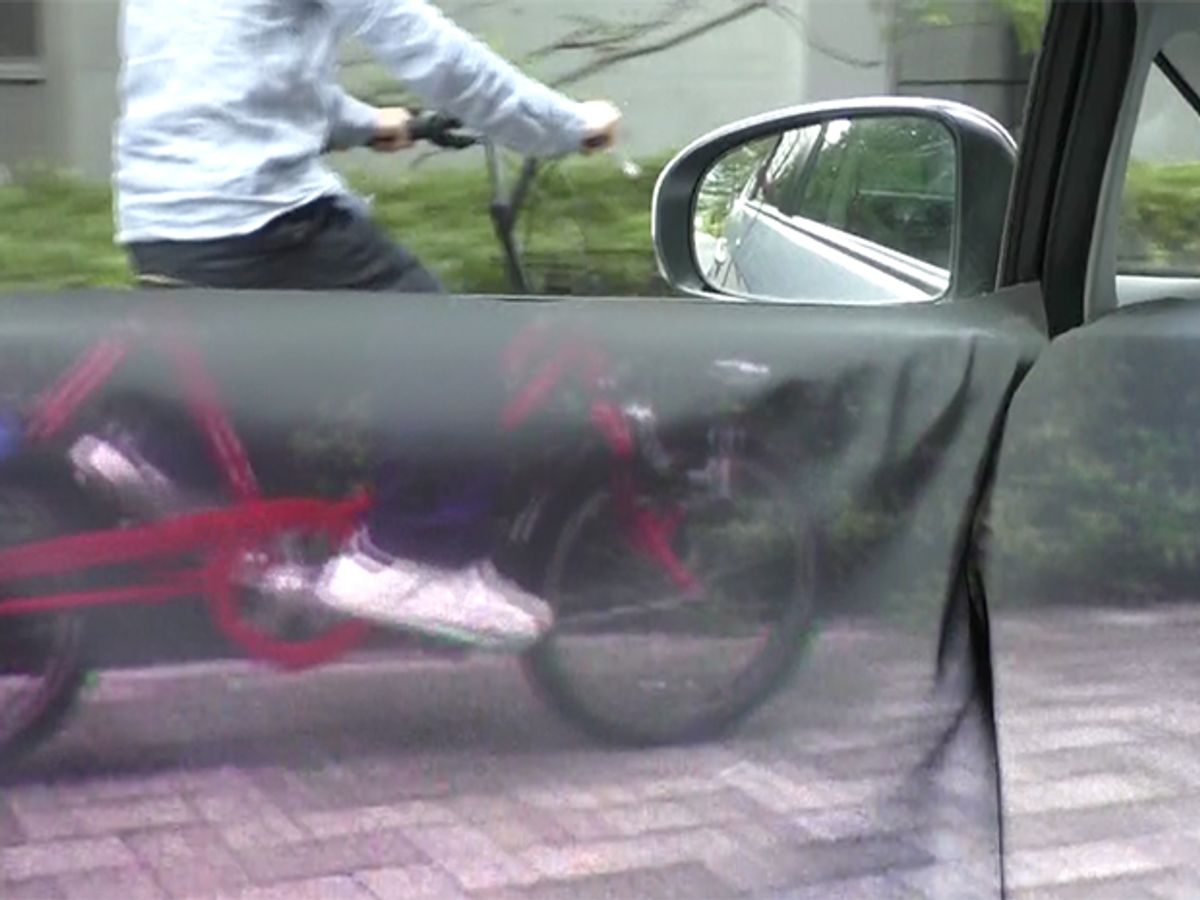
You’re traveling down the highway with the road flashing by beneath your feet and the scenery looming everywhere—fore and aft, left and right, above and below. Gone are the usual blind spots created by your vehicle’s doors, window frames, roof, and floor. You’re as free as a bird and just as aware of your surroundings.
We call this form of augmented reality a transparent cockpit because it would make the driver of a car feel like he’s piloting an airplane—another place where this technology might be used. We have implemented it in test cars using cameras, imaging software, projector displays, and reflective surfaces. Thus equipped, human beings could drive very safely while still enjoying the open road—more open, indeed, than ever before.
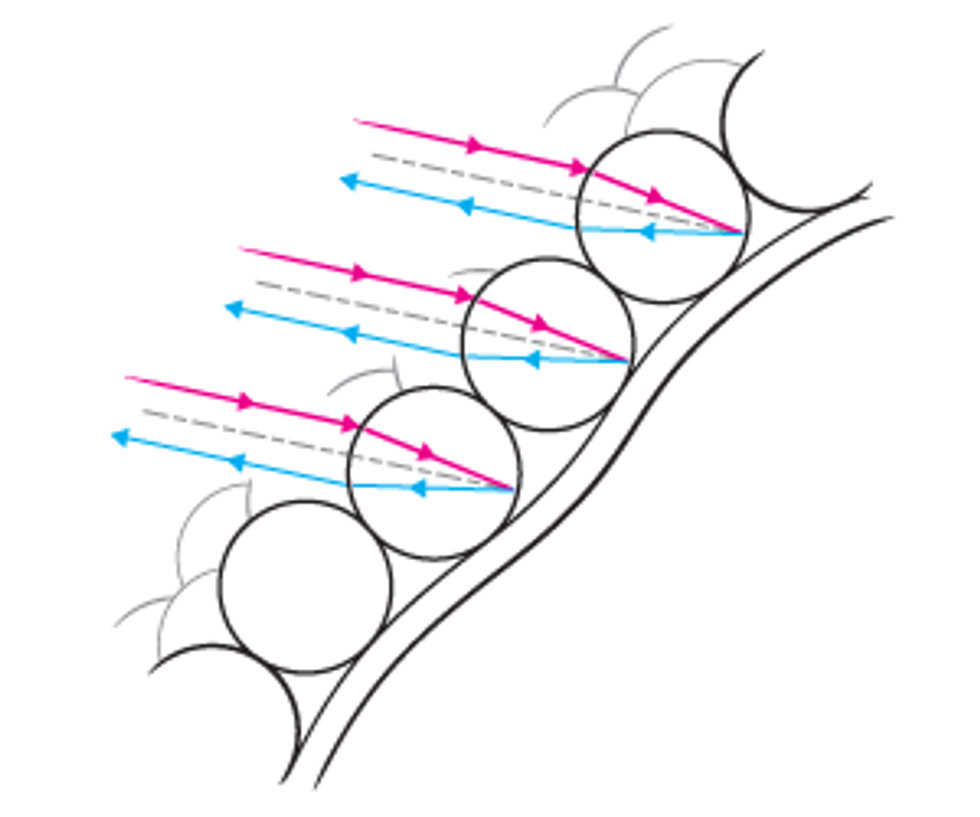
A car made of glass would be an attractive prospect if glass weren’t structurally inferior to steel. As things stand, metal posts and doors block the driver’s view. To allow the driver to see beyond these blind spots, we train cameras on the car’s surroundings, process the imagery to match the viewpoint of the driver, and then display it on the vehicle’s interior, causing the doors, backseats, and floor either to disappear or fade to a ghostly aspect.
You could use one of two types of display systems to achieve this effect: one that gives off its own light or one that reflects light from a projector. A self-illuminated display can be made of backlit LCDs, LEDs, or organic LEDs and installed right on the seats, the doors, and other interior components. But it would be hard to customize such displays to fit the varied shapes. And seats, which are usually covered with fabric, couldn’t really accommodate such a display. Instead we chose a projector system in which the car’s interior is made of a material that can either serve as a screen or allow such a screen to be placed over it.
Any conventional projection system would fail for obvious reasons. The projected image wouldn’t be bright enough to match the scenery outdoors, at least in the daytime. Images projected on a complex shape would be distorted and would have to be corrected accordingly. A special stereoscopic visor would be needed to view outdoor scenery in three dimensions, and only the driver could enjoy the display in its proper perspective.
We have solved all these problems with a new projector system that reflects light precisely back along the path it has just taken. By doing this, we can project the correct image, in its proper apparent position, directly at the observer—provided that the projector is close enough to the observer’s eyes. In order to do this, we can place it on the person’s head or mount the projector on the ceiling and have it track the person’s movements.
How to make a rolling theater in the round
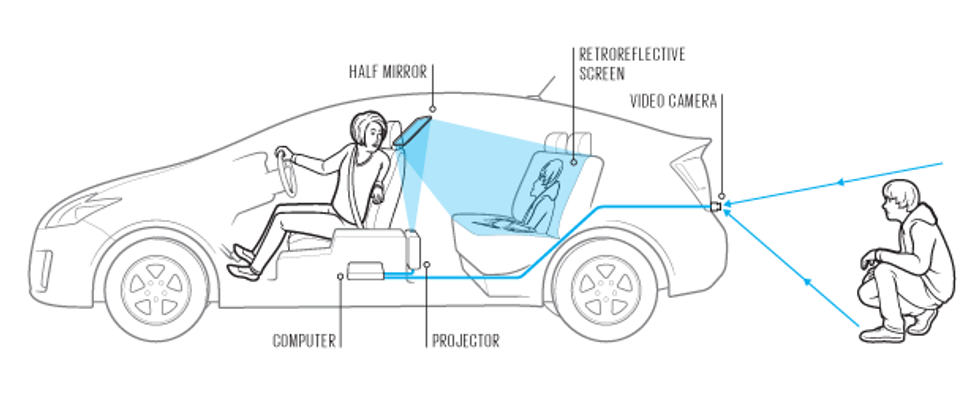
Our retroreflective projection technology, or RPT, uses a screen coated in 50-micrometer glass beads, which produces a very bright reflection. What’s more, the system uses one projector for each eye, so it can create a stereoscopic effect with a single screen. No shutter glasses or any other movie-house 3-D equipment are required.
Here’s how it works: The projector directs the outgoing beam to a half mirror in front of the observer. Part of the beam goes on to illuminate the special screen, which reflects most of it directly back through the half mirror and straight into the observer’s eyes.
The reflection is bright because the tiny beads that make up the retroreflective coating work very efficiently. When illuminated by 1 lux of light, the reflective brightness is roughly 500 candelas per lux per square meter. Multiplying this value by 0.25 to account for the reduction caused by passing to and fro through the half mirror gives a final brightness of around 125 cd/lx/m2. A similarly illuminated movie screen, by comparison, would typically have a reflective brightness on the order of 1 cd/lx/m2.
In other words, our RPT system’s projection is at least 100 times as bright as that achieved using normal screens. And because the reflection is along the axis of projection, there is no distortion of the image even when it’s projected on a screen of a complex shape.
This system can also work as a kind of optical camouflage, one that could make a person disappear into the background, for instance. The military might not come running, though, because this trick works only if the person being camouflaged is wearing clothes covered in retroreflective beads. Also, the observer must peer through a half mirror while the projector is fed data from a video camera behind the camouflaged person. A computer uses image-based rendering techniques to calculate the appropriate perspective and to transform the captured image into the image to be projected onto the subject, who then blends seamlessly into the background. It is quite an amusing effect.
Another possible use of the RPT system is to capture data from an X-ray machine or an MRI scan, render it into an image, and then superimpose it onto a patient undergoing surgery. This would be particularly useful for minimally invasive surgery, the kind conducted through a “keyhole” in the body. By superimposing ultrasonic data, the projector could also display the body’s inner organs in real time.
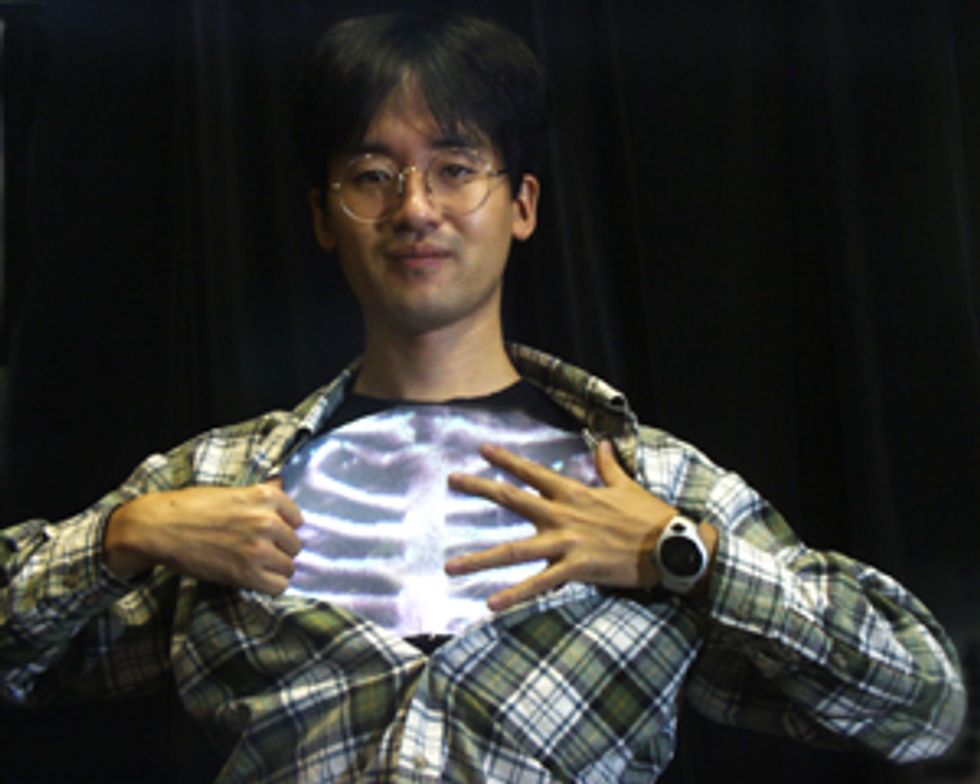
In a factory, a skilled craftsman might wear a glove made of retroreflective material. An image could be projected onto the glove showing tiny objects—such as those involved in the testing of circuits—that would otherwise be obscured by the craftsman’s hand. The possibilities of our see-through technology abound.
So far we have been describing a system that caters to just one person. But there is no reason not to equip all the people in a car with this apparatus. Indeed, it is quite possible to project multiple images on the same screen.
To do this, you could give a projector and the associated half mirror to each person, to be worn on the head or installed over it. The other method is to make an autostereoscopic 3-D display that produces a hologram-like image in the round by using a large number of viewpoints, created by an array of RPT projectors. To present motion as smooth as a movie’s panning shot, you would need several dozen projectors. However, because commercially available projectors are bulky, it would be hard to pack them closely, and so their various viewpoints would necessarily be very different from one another. When you viewed the resulting 3-D image in the round, it would lurch from one perspective to the next in herky-jerky fashion instead of moving smoothly.
We therefore developed a workaround that consists of a projector, a lens array, a half mirror, and a retroreflective screen. We also included an additional lens to ensure that each lens in the array is equally well illuminated. Projected light forms an image on the field lens. Each lens of the array works as a single projector, and they are placed so that their projected areas overlap. As a result, the number of lenses in the array is equivalent to the number of projection sources and, in turn, the number of viewpoints.
We implemented our basic, one-observer system in a car by applying retroreflector screens to the passengers’ doors and to the dashboard. In our initial experiment we used only one camera and fixed the projector to the ceiling, just above the driver’s head. Even though we hadn’t corrected the image to accurately reflect the distance of the camera from the driver’s eye, this stripped-down system made blind spots clearly visible and the car’s structures virtually transparent. Furthermore, the displayed image was sufficiently bright to see even in the daytime.
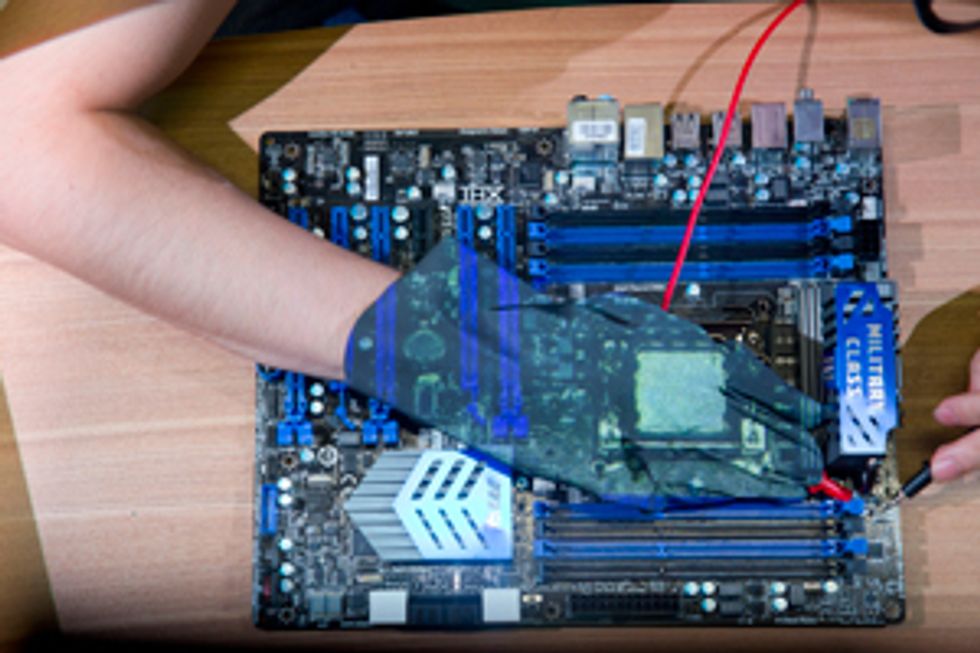
Next we built a setup specifically for a Toyota Prius that made the backseat virtually transparent, so that the driver could see everything behind the car when driving in reverse. In this application, the system had one projector and six lenses, allowing the driver to act naturally without the system’s having to track the movements of the driver’s head. The result is a panoramic view that the driver can use intuitively—quite unlike the current, counterintuitive system, which sends output from a rearview camera to a display mounted on the dashboard. We are now collaborating with several automakers and automotive electronics companies in turning our concept into a commercial system.
Besides making cars safer and driving more enjoyable, this technology could be used in the cockpit of an airplane to make the floor transparent during landing, enabling the pilot to see the runway in full view. In a cruise ship, it could provide an outdoor view for windowless rooms by making the walls appear invisible. That way, even the innermost cabins could have virtual portholes. It could work in office buildings, too, offering the denizen of every cubicle a wonderful wide-angle view.
With our RPT system, these forms of augmented reality are practical right now. As engineers continue to improve active displays, such as OLEDs, by making them brighter and by manipulating them so that they conform to complex surfaces, our technology may find wider application—wherever we need to see through things.
This article originally appeared in print as “The Transparent Cockpit.”
About the Author
Susumu Tachi and Masahiko Inami are professors at the Graduate School of Media Design at Keio University, in Yokohama, Japan; Yuji Uema is a Ph.D. candidate there.
